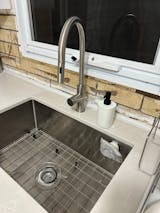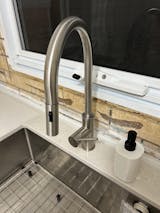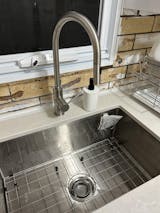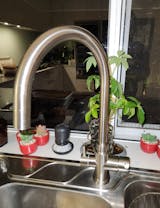How to Get More Clients as Home Builders
Getting clients for your home renovation and building business is the holy grail for many business owners.
You can have the best building skills in your area but that doesn’t mean much if you can’t get word of your business out. Like it or not, marketing yourself to your target audience is an essential part of running a business.

Getting clients for your home renovation and building business is the holy grail for many business owners.
You can have the best building skills in your area but that doesn’t mean much if you can’t get word of your business out. Like it or not, marketing yourself to your target audience is an essential part of running a business.
In this post, we’re going to cover actionable tips and strategies to get more clients for home builders like you.
Getting Referrals from the past or Current Clients
In many businesses, referrals and word of mouth are the number 1 strategy for getting clients.
Why are so referrals so valued in the business world?
- It is free. All you need is an introduction to someone from your clients and you have a warm lead for you to close.
- It is simple. When a referral gets in touch with you, all you have to do is to get in touch with them; you don’t have to go through the process of moving them through your sales funnel or things like that.
- It is effective. Referrals as effective as people trust their friends and colleagues. If a best friend of yours talks about how great a certain home builder is, surely you’d trust him, correct?
To understand the technique of getting referrals to your business, you have to understand why people give referrals in the first place.
Make Sure That Your Client Is Satisfied
Customer satisfaction should always be the main goal of your business.
You may think that you are guaranteeing customer satisfaction, but do you really know if your efforts are enough?
If you are only delivering customer satisfaction during the final stages of a consultation, when there’s only a thin line between closing the sale, then you’re not doing it right.
Customer service is not an on or off switch; it is also not something that you do when the process of finalising a sale happens. Instead, it is something that you MUST do before, during, and after the deal is over.
You also have to change your mindset from getting a sale to establishing a good relationship with your clients. It’s worth it–excellent customer service will delight your clients as well as leading to referrals.
In a nutshell, excellent customer service comes down to keeping their needs covered and minimising their risks and doubts as much as possible. The only way to achieve this is by delivering good service with plenty of honest and frequent communication with your clients.
Here’s what you can do to generate more referrals.
1) Have realistic goals and expectations for your clients
You should always have a realistic expectation in place for your clients.
It may be easy to land a gig by overselling your services to your client. However, if you can’t meet the lofty expectation of yours, get ready to handle unhappy customer concerns.
However, this does not mean that you should completely shut down the expectations of your clients; you want to give them a benchmark that satisfies them as well as being easy to be met by you.
This is all done through honest communication with your client.
If expectations change along the way, you have to be honest and brave to tell your clients about what’s happening. Remember, it’s always better to let them know the truth than to disappoint them with fake hopes.
A great way to do this is by involving your clients in the process. You can set up seminars or consultations to let them know what your working process is.
For instance, if you are setting up drywalls for their home, go through a chat with them and explain what’s supposed to happen and what to expect from the process. The more involved your clients are with the process, the more they will understand the expectations of the project.
Of course, if your client is a reserved or hands-off person, you don’t have to force or pressure them into doing so.
2) Have a referral program in place
Offering incentives for customer referrals can benefit your home builder marketing strategy—if you do it carefully. It’s a good low-cost way to generate qualified business leads, and you can reward existing clients for their loyalty at the same time.
So, what are the incentives that should be offered to referrals?
If your clients are likely to make a repeat order with you, offer them discounts or cashback on their next project with you.
This acts as a double reward for your business; you get a new client and your past clients come back to you for repeat business.
You can decide to give your clients a percentage or an absolute amount discount. A rule of thumb to remember is that for invoices above $100, a percentage discount seems more attractive. For invoices below $100, a cash discount is better.
You can also use gift cards or gifts as incentives for your clients. To make things even better, understand the personalities, quirks, and hobbies of your clients.
If you know that one of your clients, Rachel, loves Starbucks, for each prospect that she brings to you, give her a Starbucks gift card as a token of appreciation.
Of course, you can use money as an incentive but be careful not to burn yourself along the way.
You have to make sure that your referral programs do not become an income-generating platform for your clients. Instead, it has to act as a ‘thank you’ offer for bringing clients to your business.
Getting Clients and Leads from Search Engine Results

SEO is an acronym for search engine optimisation. One of SEO’s goal is to put your rankings on the first page of Google’s search results page (or any other search engine like Bing or Yahoo) for your target keyword.
This means that when people search for something like “local builders near me”, you want to be on the first page and preferably at the top of the results page.
The idea is simple: how many times have you actually clicked on the second page of Google’s search page let alone the bottom 5 results?
While this section won’t cover SEO in great detail, doing these strategies should be good enough for now until you learn more about SEO.
Use a Clear and Attractive Title for Your Website
You want your website title to contain your keyword as well as including your brand name.
Let’s assume that your business is named John’s Construction and you perform home renovations for locals in Sydney.
You don’t want to have a headline like this:
“John’s Constructions Ltd. Home Renovation and Home Builders and Maintenance in Sydney, Australia”
or
“John’s Constructions”
The first title is too long for search engines which means that a good portion of the sentence will be cut off. It is also over-optimised which means that you’ve put in too many keywords in a single sentence.
It sounds counter-intuitive but having too many similar target keywords in a sentence or a webpage is going to cause a penalty from Google; a penalty results in a loss of rankings which means that your page won’t even appear on the results page.
The second sentence could work if you are already famous in your area but it does not give enough information about what you do. It also does not contain keywords related to your business which means that people would have a hard time finding you.
Of course, not having keywords in your website title is not the end of the world but it would help much more if you have some.
Instead, you want to go with a title like this:
“Sydney Home Builders and Renovation | John’s Construction”
“Sydney’s #1 Home Builders – John’s Construction”
“John’s Construction | Trusted Home Renovations And Builders in Sydney”
As you can see, the titles are descriptive, does not exceed Google’s title length, and contains relevant keywords to your business.
In general, you want your title length to:
- Contain your brand name (your business name)
- Contain one or two keywords that are related to your industry
- Not over 70 characters in length
- Effectively describe the purpose or services of your business
Another important aspect of search engine results pages is the description below your website’s title.
The same concept applies to the description as well–you want your description to accurately describe and explain what you do as well as your services.
For writing descriptions, follow these guidelines:
- Describe your services clearly without using too many characters. For example, a home renovation business could contain the phrase “We build and renovate houses with quality materials at the lowest price.” The key here is to be short and simple.
- Contain one or two keywords. Using the above phrase, you want to include keywords like build, renovate, or renovation in your description to make it easier for search engines to identify your website.
- Keep your descriptions below 100 characters if possible.
- Insert a call to action in your description. You want a phrase that invites the user to click on your website. You could use phrases like “Free consultations, click now!” or “Click for the best rates”.
Using Google My Business

Google My Business is Google’s solution to local searches. This means that with Google My Business (GMB), you’re able to directly connect with searches from people around your location.
When your business is registered on GMB, locals will see a results page similar to this when they search for a keyword relevant to your business.
To make sure that your business stays on top of listings, you have to:
- Have a listing with your actual business name (Google will reject your application if it’s fake)
- List your business in the correct category or industry
- Provide as much data about your business as possible from your address to your opening hours
- Have a valid and working business phone number in place
- Include clear and accurate photos of your office or business location
- Include local citations from places such as Google Pages or Houzz
Thankfully, Google has an extremely detailed and easy step-by-step guide to setting up Google My Business.
Head over to this link and get your business up and running on GMB now.
Using Adwords (Paid Advertising) To Get Clients
Google AdWords is Google’s primary business model for a reason: it’s effective and it works great for local businesses.
To learn more about setting up Google AdWords for your business, this post explains setting up a Google AdWords campaign well.
Here are some guidelines to follow in your Google AdWords campaigns:
Use a Relevant Landing Page
A landing page is a page or website that you send your visitors who click on your ads to.
The number 1 mistake to do here is to send them to your homepage. Most homepages are not targeted enough to get a good ROI on your ad spend.
To get better results, you want to send your visitors to your contact page or your services page where you have information on what you do and how to contact you.
Remember, most of the times you’re aiming for a sale, not a click on your ad.
Don’t Trick Your Visitors
You don’t want to misalign your ads with your landing page. This means that if your ad is for a home renovation service, you want to send them to the home renovation service section of your website.
Misguiding your visitors and sending them to irrelevant web pages lowers your Google ad score. Lower ad scores will lead to lower exposure of your ads; you’re not only losing money but you’re also getting fewer clicks and views along the way.
Use Negative Keywords
Negative keywords are an option on Google’s AdWords platform. These are keywords that are related to your objective but are also keywords that you do not want to include for your ads.
For example, you want to advertise your home renovation services but you do not want to work with condominiums and apartments for now.
By including negative keywords such as “condominium”, “condo”, or “apartment”, your ads won’t be shown to people who search for those terms which reduces the cost of your ad spend as well as increasing the relevancy of your ads.
Always Test and Split-Test Your Ads
A split-test is the action of having several variations of the same ad to see which works best. Think of it as a competition where you change a few things in variations of your ads to find a “winner” which is the best performing one.
A common mistake among business owners is to use an effective ad for a long period time.
A great ad may work but if you constantly use it without changing anything, its effectiveness fades over time which leads to higher costs and lower ad scores in AdWords.
To keep your ads consistent, always split-test things such as your headline, landing pages, or descriptions. When you find a winning combination, stick with it but not for too long.
Use your experience and lessons learned from your split tests to craft better ads for your business.
For more information on optimising AdWords, Google’s official resource page has excellent information and knowledge for you to learn.
Further Information
To learn more about building tools and other articles like this, head over to our blog where we have guides and how-to’s for builders and homeowners.
To get in touch with us, call us at 1300-123-122 or contact us via e-mail over here.













